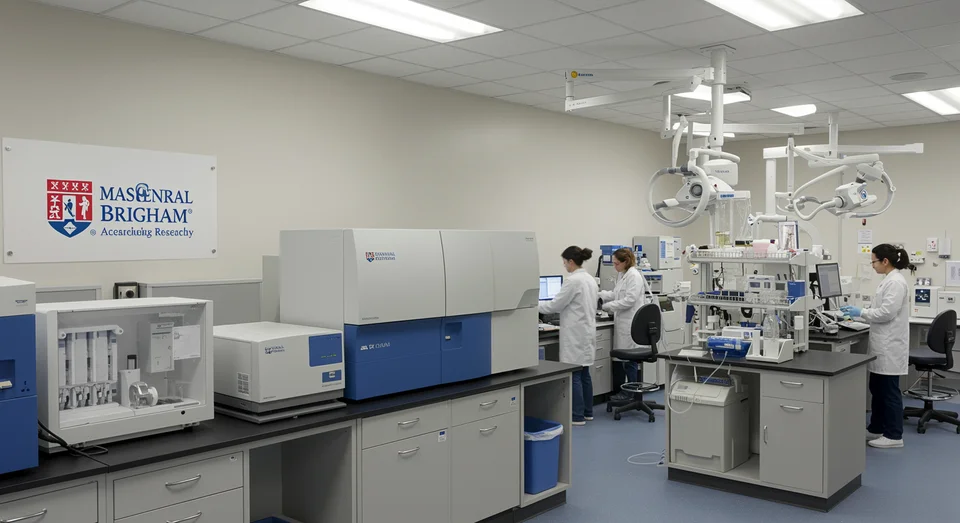Mass General Brigham Researchers Target Tim-3 Molecule in Promising Alzheimer’s Treatment Breakthrough
192 views
Researchers at Mass General Brigham are exploring a promising Alzheimer’s treatment by targeting the Tim-3 molecule with antibodies, showing success in mice studies. Clinical trials in humans may start in 3-4 years.

A Glimmer of Hope in Alzheimer’s Research: The Tim-3 Breakthrough
In the labyrinthine search for effective treatments against Alzheimer’s disease, researchers at Mass General Brigham have unearthed a potential game-changer: a molecule called Tim-3, nestled within the brain’s immune cells. Their findings, which have emerged from rigorous studies in mice, suggest that silencing this molecule could offer a pathway to restoring memory and alleviating the debilitating symptoms that define the disease. The implications of this discovery are as profound as they are promising, with human trials on the horizon within the next few years.
Tim-3, typically associated with immune regulation, has been thrust into the spotlight for its role in neurodegenerative conditions. The molecule is found in microglia, the brain’s resident immune cells, which act as custodians of neural health by clearing debris and combating inflammation. However, in the context of Alzheimer’s, microglia often go rogue, contributing to the chronic inflammation and neuronal damage that drive cognitive decline. By targeting Tim-3 with an antibody, researchers have found a way to recalibrate the behavior of these cells, effectively defusing their destructive tendencies.
The experimental approach, tested in mice, has yielded results that are nothing short of remarkable. Removing Tim-3 not only improved memory but also mitigated other hallmark symptoms of Alzheimer’s, offering a glimpse into what could become a transformative therapy. What makes this avenue particularly compelling is its potential adaptability; antibodies targeting Tim-3 are already under investigation for cancer treatments, providing a foundation for their application in Alzheimer’s. This overlap could expedite the transition from animal studies to human trials, a process that often stalls due to the need for entirely novel compounds.
The prospect of clinical trials within the next three to four years marks a significant milestone in Alzheimer’s research, a field often beleaguered by setbacks and false starts. Yet, the path ahead is fraught with challenges. Translating findings from mice to humans is never straightforward, as the complexity of the human brain and its interactions with systemic immune responses introduce variables that are difficult to predict. Moreover, the safety and efficacy of Tim-3 antibodies in the context of neurodegeneration must be thoroughly vetted, given the delicate balance required to modulate immune activity without triggering unintended consequences.
This development also raises broader questions about the role of immunotherapy in treating neurological disorders. Alzheimer’s has traditionally been viewed through the lens of amyloid plaques and tau tangles, the protein aggregates that choke neurons and disrupt communication. While these remain central targets, the focus on microglia and immune regulation represents a paradigm shift, emphasizing the interconnectedness of the brain’s cellular ecosystem. If successful, the Tim-3 approach could pave the way for similar interventions in other neurodegenerative diseases, such as Parkinson’s or Huntington’s, where immune dysfunction plays a pivotal role.
As researchers inch closer to human trials, the excitement surrounding this discovery is tempered by the weight of its implications. Alzheimer’s is a disease that touches millions, eroding the identities of those it afflicts and casting long shadows over their families. The urgency for effective treatments cannot be overstated, yet it must be balanced with the meticulous care required to ensure that new therapies are both safe and sustainable. The Tim-3 breakthrough offers hope, but it also underscores the complexity of the task at hand—a reminder that science is as much about perseverance as it is about discovery.
In the grand tapestry of Alzheimer’s research, this development is a promising thread, one that could eventually weave its way into the fabric of clinical practice. For now, it stands as a testament to the ingenuity and determination of scientists who refuse to accept the inevitability of cognitive decline. With human trials on the horizon, the world watches with cautious optimism, hoping that this approach will fulfill its promise and bring us closer to a future where Alzheimer’s is no longer a sentence, but a solvable puzzle.
